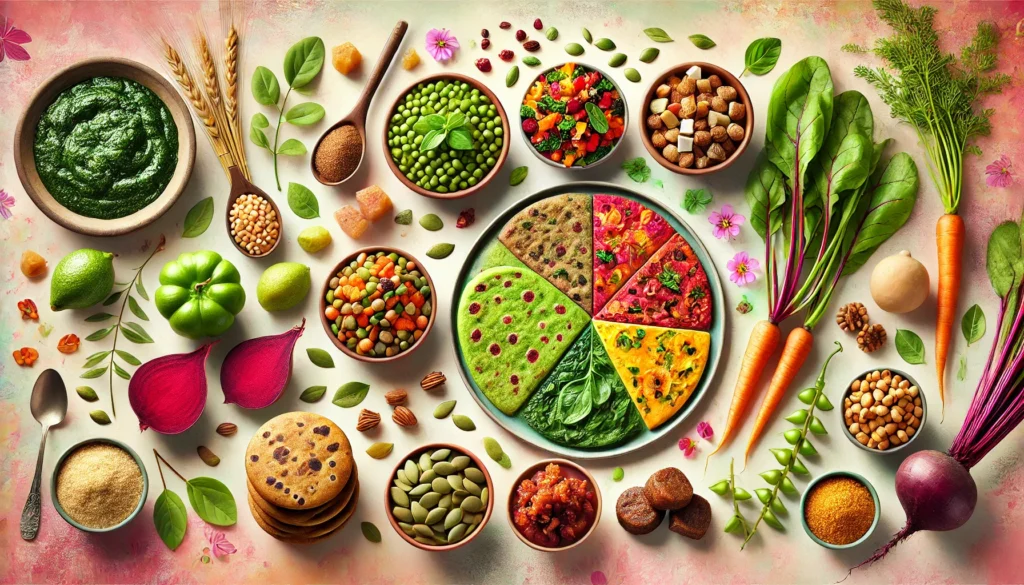- July 30, 2024
- 11:44 AM

Iron plays a vital role in a baby’s growth and development, particularly in supporting healthy brain function and red blood cell production. During the first six months of life, babies typically get enough iron from breast milk or iron-fortified formula. However, as they grow and start to consume solid foods, it becomes essential to introduce iron-rich foods for babies to ensure they meet their nutritional needs.
As parents start introducing solid foods, understanding which foods are rich in iron and how to prepare them safely is important for building a well-rounded and nutritious diet for their little one. In this blog, we will explore the best iron-rich foods for babies, along with tips on when and how to introduce them.
When to Start Introducing Iron-Rich Foods for Babies
Around six months of age, a baby’s natural iron stores, which they’ve built up during pregnancy, begin to deplete. This is the perfect time to start introducing iron-rich foods for baby, as breast milk or formula alone may no longer meet their growing needs. At this stage, babies are typically ready for solids, showing signs like good head control, interest in food, and the ability to sit up with minimal support. Introducing iron-rich foods at this crucial point supports their development, helping to prevent iron deficiency while promoting healthy growth and brain function.
How to Introduce Iron-Rich Foods Using Baby-Led Weaning
Introducing iron-rich foods through baby-led weaning (BLW) can be an exciting and empowering way for your baby to explore new tastes and textures while meeting their nutritional needs. Baby-led weaning encourages self-feeding from the start, allowing babies to handle finger foods and eat at their own pace. Like start with, offer soft, easy-to-grasp foods that are rich in iron, such as steamed broccoli, well-cooked lentils and mashed beans etc.
Top 10 Iron-Rich Foods for Babies
Here are ten iron-rich foods for babies commonly found in Indian cuisine, along with a simple recipe for each:
1. Spinach (Palak)
Recipe: Spinach Paratha
• Ingredients: Spinach leaves, whole wheat flour, cumin seeds, salt, water.
• Instructions: Blanch and puree spinach. Mix with flour, cumin, and salt. Knead into a dough, roll into parathas, and cook on a griddle.
2. Lentils (Masoor Dal)
Recipe: Masoor Dal Cheela
• Ingredients: Masoor dal, onion, green chili, cumin seeds, salt, oil.
• Instructions: Soak dal, blend into a batter, mix with chopped onions and spices. Pour batter onto a hot griddle, cook until golden on both sides.
3. Chickpeas (Chana)
Recipe: Chana Salad
• Ingredients: Boiled chickpeas, cucumber, tomato, onion, lemon juice, chaat masala.
• Instructions: Mix all ingredients in a bowl and serve as a healthy salad.
4. Beetroot
Recipe: Beetroot Raita
• Ingredients: Grated beetroot, yogurt, cumin powder, salt.
• Instructions: Mix grated beetroot with yogurt, cumin, and salt for a refreshing raita.
5. Fenugreek Leaves (Methi)
Recipe: Methi Thepla
• Ingredients: Fenugreek leaves, whole wheat flour, yogurt, turmeric, cumin.
• Instructions: Mix ingredients into a dough, roll into flatbreads, and cook on a griddle.
6. Pumpkin Seeds
Recipe: Pumpkin Seed Chikki
• Ingredients: Pumpkin seeds, jaggery, ghee.
• Instructions: Melt jaggery in ghee, mix in pumpkin seeds, and pour into molds to set.
7. Jaggery (Gur)
Recipe: Jaggery Rice
• Ingredients: Rice, jaggery, ghee, cardamom.
• Instructions: Cook rice, melt jaggery in ghee, mix with rice and cardamom.
8. Amaranth Leaves (Chaulai)
Recipe: Amaranth Stir-Fry
• Ingredients: Amaranth leaves, garlic, mustard seeds, oil.
• Instructions: Sauté garlic and mustard seeds in oil, add amaranth leaves and cook until tender.
9. Dates (Khajoor)
Recipe: Date and Nut Ladoo
• Ingredients: Dates, nuts (almonds, cashews), ghee.
• Instructions: Blend dates and nuts, form into balls, and coat with ghee.
10. Ragi (Finger Millet)
Recipe: Ragi Porridge
• Ingredients: Ragi flour, water, milk, jaggery.
• Instructions: Cook ragi flour in water until thickened, add milk and jaggery, and simmer until smooth.
Importance of Introducing Iron-Rich Foods for Babies
Iron is a critical nutrient that plays a key role in a baby’s overall growth and development. Introducing iron-rich foods at the right stage of infancy ensures that your baby meets their body’s increasing demands for this essential mineral. Here’s why it’s important:
1. Supports Brain Development:
Iron is vital for brain development and cognitive function. It helps carry oxygen to the brain, allowing your baby’s mental and physical growth to progress at a healthy pace. A lack of iron can affect memory, learning abilities, and overall cognitive performance.
2. Prevents Iron Deficiency Anemia:
Iron deficiency can lead to anemia, a condition where there aren’t enough red blood cells to transport oxygen throughout the body. This can cause fatigue, weakness, poor appetite, and developmental delays. Babies are particularly vulnerable to iron deficiency as they grow rapidly and require more iron to support their expanding needs.
3. Boosts Immune System:
Adequate iron levels are essential for maintaining a strong immune system. Babies with low iron levels are more susceptible to infections and illnesses, making it harder for their bodies to fight off diseases.
4. Facilitates Physical Growth:
During the early months of life, babies grow rapidly, and iron is crucial for supporting this growth. It helps in the production of hemoglobin, the protein in red blood cells that carries oxygen to muscles and tissues, promoting healthy physical development.
5. Energy and Vitality:
Iron helps convert nutrients into energy. Babies who receive sufficient iron are typically more active, alert, and energetic, compared to those with iron deficiency who may appear tired or sluggish.
Ensuring your baby gets enough iron through a well-balanced diet of iron-rich foods supports their overall health, development, and wellbeing during their early years.
How to Boost Iron Absorption
While introducing iron-rich food is important, ensuring your baby absorbs enough of that iron is equally crucial. There are two types of iron: heme iron (found in animal products) and non-heme iron (found in plant-based foods). Heme iron is more easily absorbed by the body, but non-heme iron absorption can be enhanced with a few simple strategies.
1. Pair Iron with Vitamin C:
Vitamin C significantly boosts the absorption of non-heme iron. Offering foods rich in vitamin C, like oranges, strawberries, tomatoes, or bell peppers, alongside iron-rich meals can help your baby’s body absorb more iron.
2. Avoid Calcium-Rich Foods During Iron-Rich Meals:
Calcium can inhibit iron absorption, so it’s best to avoid serving high-calcium foods (like dairy) during meals that are focused on iron intake. Offer these at separate times of the day instead.
3. Cook in Cast Iron Cookware:
Surprisingly, cooking food in cast iron pans can increase the iron content of the meal, especially when preparing acidic foods like tomato-based dishes.
4. Avoid Tea and Coffee:
Even though these are not part of a baby’s diet, older children may start consuming tea or other similar beverages, which contain polyphenols and tannins that hinder iron absorption. It’s important to avoid giving them around mealtime when serving iron-rich foods for baby.
By implementing these strategies, you can help ensure that your baby is getting the maximum benefit from the iron-rich foods you introduce.
In conclusion, introducing iron-rich foods to your baby is a crucial step in supporting their growth and development. By embracing baby-led weaning, you not only provide essential nutrients but also foster independence and a healthy relationship with food. Remember, every small bite counts in their journey towards a balanced diet. Happy feeding!
Join our Nutrition Club today and get daily and weekly nutrition-balanced meal plans, easy-to-follow recipes, and meal strategies—all designed for infants, toddlers, and your entire family. Simplify your mealtime today!
Know your guide

Hello, amazing parents! I’m Riddhi Verma Ayyagari, a Stanford-certified Child Nutritionist and Baby-Led Weaning Expert. With years of experience and a proven approach, I’ve helped 8000+ of families navigate child nutrition, from starting solids to tackling picky eating.
Make mealtimes easier and more enjoyable with personalized 1:1 Sessions and my expert-led MasterClass. Start your journey to stress-free feeding today!
